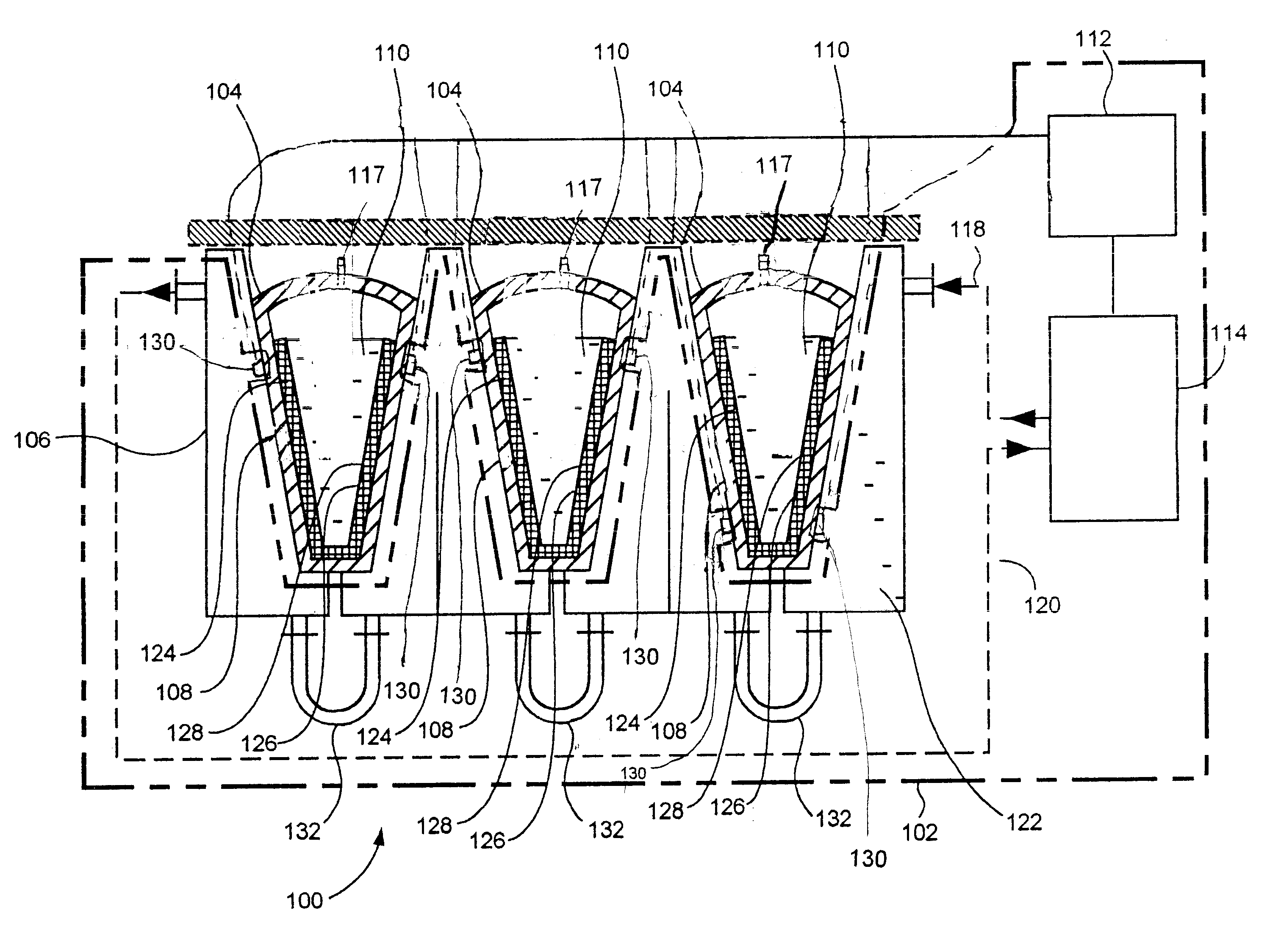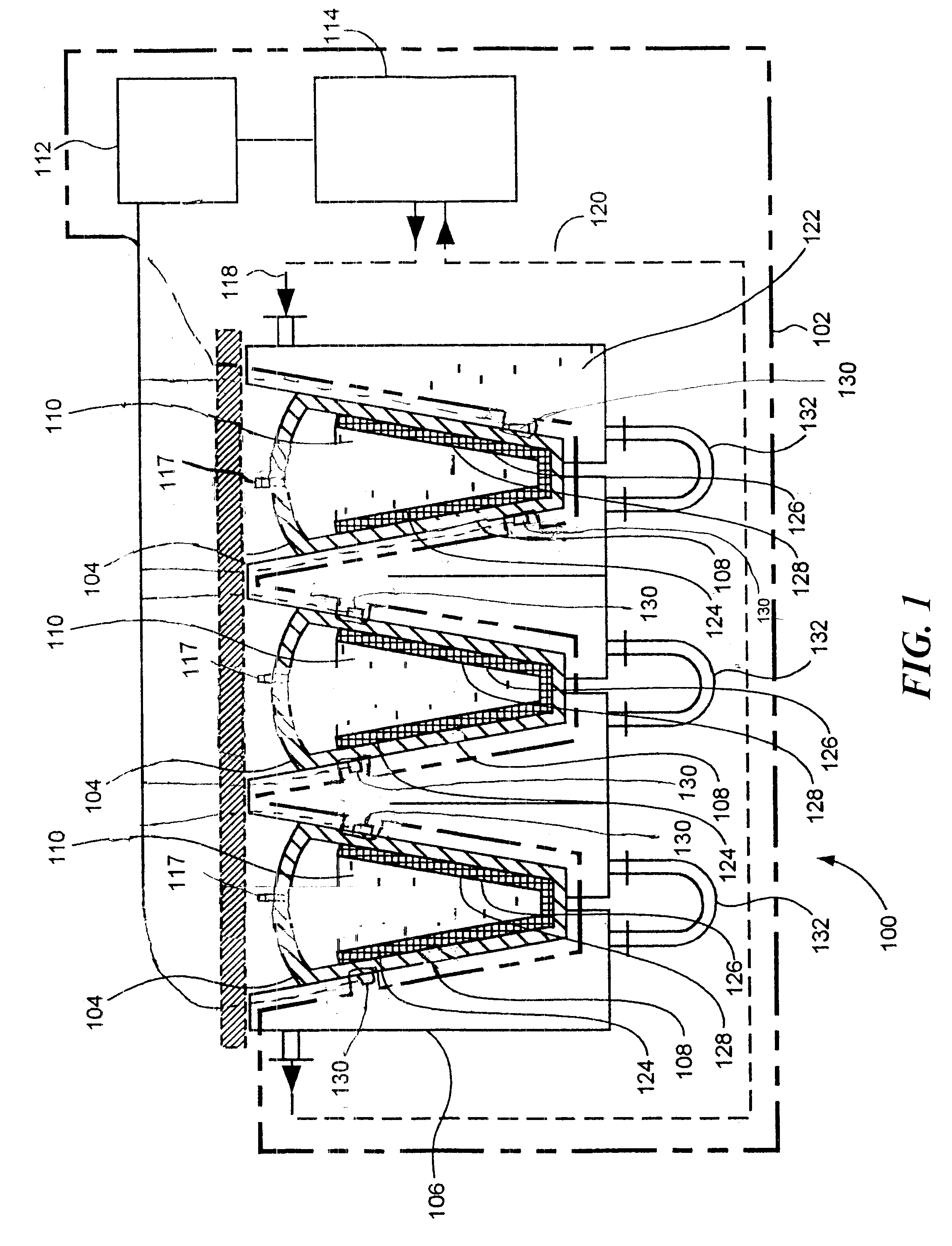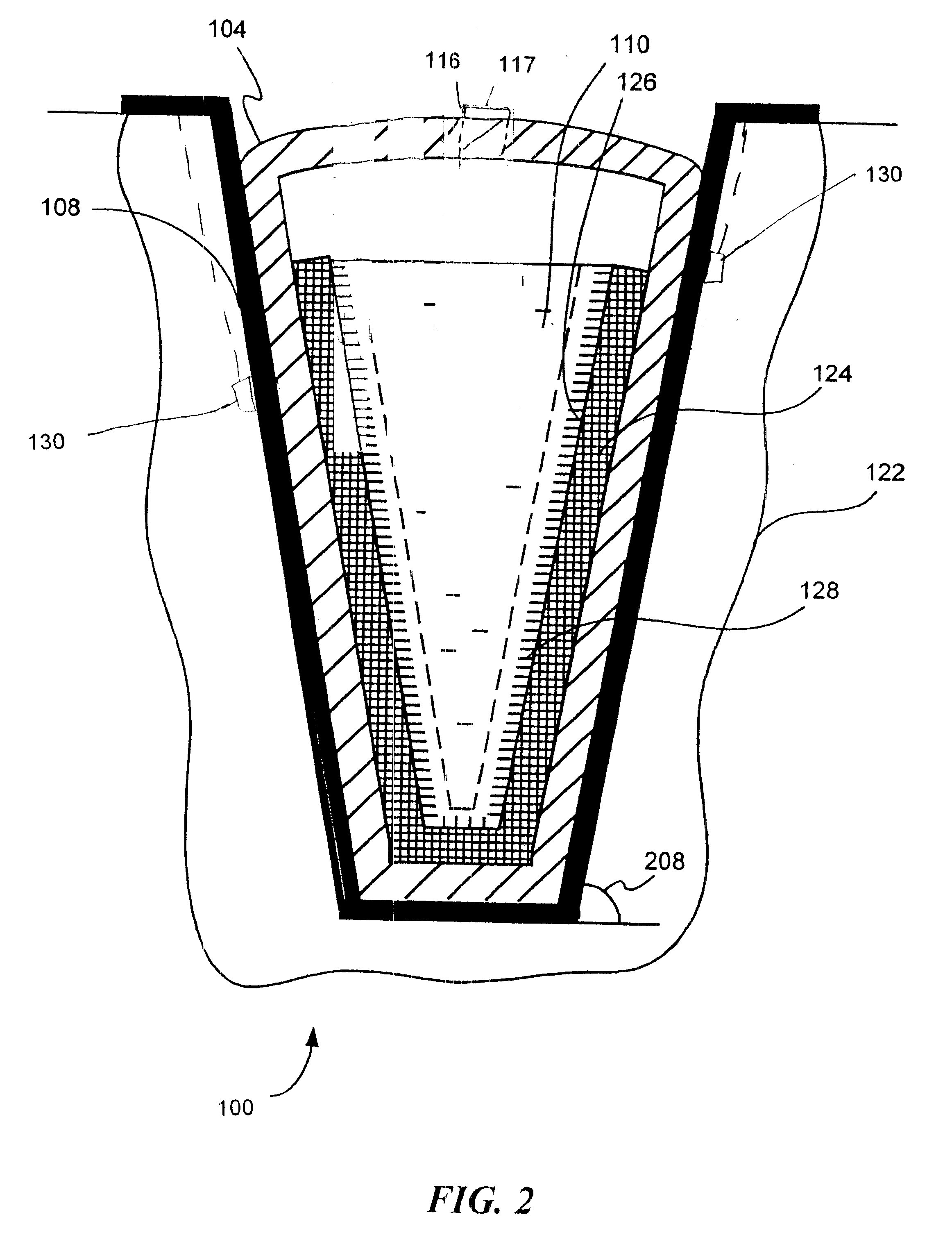The biopharmaceutical materials are left to freeze until they are solid, in an uncontrolled fashion.
Significant losses in biopharmaceutical material activity have been noted using such current techniques.
Further, it has been noted that conventional cryopreservation methods can lead to cryoconcentration, or the redistribution of solutes including biopharmaceutical product from the frozen volume to the unfrozen cavity where their concentration may significantly increase.
The result of cryoconcentration can include the crystallization of buffer components leading to a pH change that can affect stability, folding, cause undesirable chemical reactions, or even create cleavage of the biopharmaceutical material.
Additionally, damage to the containers has been noted using conventional cryopreservation techniques.
Container damage may be caused by freezing stress due to volumetric expansion of aqueous biopharmaceutical materials within the container during freezing.
Rupture or damage to the integrity of the container is undesirable, as it can compromise sterility or lead to biopharmaceutical material contamination or leakage or loss of the biopharmaceutical material.
Another problem faced by those of skill in the art is that currently available process methods and apparatus designs intended for cryopreservation of biopharmaceutical materials generally do not exhibit good linear scalability.
Consequently, longer times are required to freeze the contents of larger containers if the same cooling surface temperature is maintained.
Such longer times are undesirable because this results in lower process throughputs.
Further, the slow freezing is known to cause cryoconcentration effect with its detrimental effects upon the product.
However, adjacent placement of multiple containers in a freezer creates thermal conditions differences and temperature differences from container to container.
The result is different thermal history for the contents of individual containers thus creating problems with compliance with the Good Manufacturing Practices (GMP) as will be understood by those skilled in the art.
For a large batch, it is also time consuming and counter-productive to divide the lot into a large number of subunits.
As a result, the cells may rupture and / or become unviable.
On the other hand, if the cells are frozen too slowly, the cells are exposed to concentrated solutes over extended period of time, which may also lead to cell damage.
The freezing rate may affect biopharmaceutical material distribution within a frozen volume with nonuniform distribution of biopharmaceutical materials leading to detrimental effects.
The freezing rate also affects the final frozen matrix, which may have biopharmaceutical material-protecting or biopharmaceutical material-damaging characteristics.
Consequently, the dendritic freezing front behaves as a solid interface with solutes and biopharmaceutical materials not being integrated into the solid mass, but are being instead rejected and pushed towards the center of a flexible sterile container thus causing severe cryoconcentration in the liquid phase of the biopharmaceutical materials.
This situation may still result in damage to biopharmaceutical materials.
This situation may still result in damage to biopharmaceutical materials.
If the velocity of dendritic freezing front increases beyond approximately 250 millimeters per hour, dendrites start to decrease in size and become more compactly packed, thereby losing the ability to properly embed solutes and particles comprised in biopharmaceutical materials into freezing front.
These non-equilibrated solid masses are prone to ice recrystallization, when dissolution of smaller ice crystals and growth of larger ice crystals may impose excessive mechanical forces on biopharmaceutical materials.
This produces a large product-ice contact interface area, due to the very large number of small ice crystals, which is detrimental to biopharmaceutical materials.
The glassy state may protect a biopharmaceutical product, whereas a crystalline state may have a detrimental effect upon a biopharmaceutical product.
In this regard, little or no control is possible of the freezing fronts within any containers located in the cabinet or chest freezer.
Variables such as location of the container within the cabinet or chest freezer, number of containers within the cabinet or chest freezer, geometry of the container, wall thickness of the container, material of construction of the container, and so on combine to make practical control of the freezing front within the container difficult or impossible.
This stress can cause multiple effects detrimental to biopharmaceutical materials 110: biological cells can be ruptured, proteins may unfold, the solubility of gases and of solutes change (may lead to precipitation later), as well as changing structure of ice crystals under pressure.
These effects may negatively affect biopharmaceutical materials 110 by the pressure alone, or may change the structure of solid mass 124 beyond the intended controlled dendritic structure.
In addition, such stress can lead to the situation when the external (surrounding the liquid pocket) solid mass 124 cannot bear the stress anymore and cracks randomly (such randomness can be anticipated due to uncontrolled nature of the liquid pocket formation).
Damage to the walls of flexible sterile container 104 may result in leakage and loss, or contamination or loss of sterility of biopharmaceutical material(s) 110.
 Login to View More
Login to View More 


